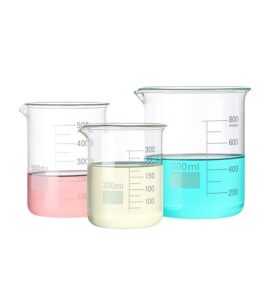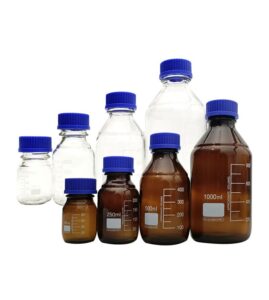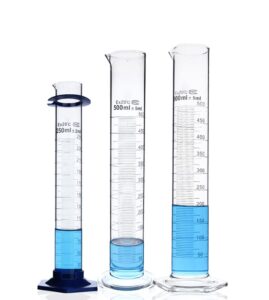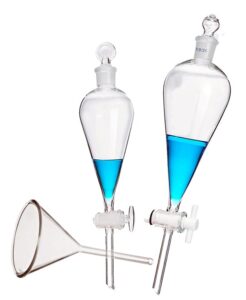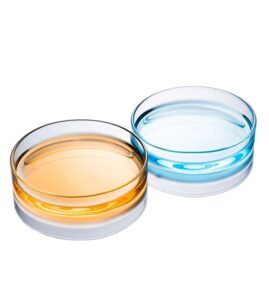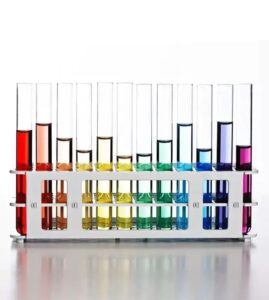Have you ever found yourself struggling with a filtration process, wondering if there’s a more efficient way to utilize your funnels, flasks, and filter paper? Is there a secret formula to perfecting this fundamental laboratory technique? How can one ensure that no precious sample is wasted and that the filtration is as clean and quick as possible?
Understanding the art and science of filtration is crucial for laboratory efficiency and success. This guide aims to equip you with the knowledge to master the use of funnels, flasks, and filter paper, ensuring that your filtration process is not only efficient but also effective.
Let’s delve into the world of filtration, one step at a time, unraveling the mysteries of proper tool selection and usage.
The Essentials of Filtration
Filtration is a physical separation process used to remove solids from liquids or gases using a filter medium that allows the fluid to pass but not the solid. The choice of funnels, flasks, and filter paper is pivotal to the process’s success.
Choosing the Right Funnel
The funnel is the first point of contact in the filtration process. Selecting the appropriate funnel type is essential. There are several types of funnels, including Büchner funnels, Hirsch funnels, and simple gravity funnels. Each type serves a specific purpose.
- Büchner funnels are ideal for vacuum filtration, where rapid separation of a liquid from a solid is needed.
- Hirsch funnels are similar but more suited to filtering smaller quantities.
- Gravity funnels work well for simple filtrations that do not require a vacuum.
For detailed selection guidance, refer to resources like the Sigma-Aldrich website for specifications and applications of different funnels.
Selecting the Right Flask
After the funnel, the flask holds your filtrate. Büchner funnels pair with vacuum flasks, also known as Erlenmeyer flasks, designed to withstand the pressure difference during vacuum filtration.
When choosing a flask, consider the volume of liquid you’ll be filtering. Ensure the flask’s capacity is sufficient to hold the filtrate without risk of overflow.
Understanding Filter Paper
The choice of filter paper is equally critical. Filter papers come in various pore sizes and are selected based on the particle size you wish to separate from the filtrate.
A rule of thumb is to match the filter paper’s pore size with the particle size for optimal filtration efficiency. For reference on filter paper types and their applications, the Whatman filter selection guide is an invaluable resource.
Mastering the Technique
Filtration efficiency is not only about selecting the right tools but also mastering the technique.
Preparing Your Filtration Apparatus
- Start by setting up your filtration apparatus correctly. Ensure the funnel sits snugly on the flask to prevent any leakage or exposure to air that could disrupt the vacuum in vacuum filtrations.
- Wetting the filter paper with a solvent can help it adhere to the funnel, creating a seal that prevents sample loss.
The Filtration Process
- Slowly pour your mixture onto the center of the filter paper, allowing it to spread out and filter through evenly.
- If using vacuum filtration, watch the flask carefully to avoid overflow or drying out of the filter cake.
Post-Filtration Care
- Once filtration is complete, carefully remove the filter paper and, if necessary, dry it to weigh the retained solids.
- Clean your flask and funnel immediately to prevent any residues from hardening, making them difficult to remove later.
Essential Laboratory Glassware for Efficient Filtration
In the realm of laboratory experiments, utilizing the appropriate glassware is pivotal for enhancing filtration efficiency and accuracy. Among the diverse array of tools at a scientist’s disposal, three types of glassware stand out for their critical roles in filtration processes: the filtration funnel, filter paper, and the filtration flask.
Filtration Funnels: The Cornerstone of Laboratory Filtration
The filtration funnel is one of the most fundamental pieces of equipment in laboratory filtration. Typically consisting of a funnel, a sieve, and a spout, filtration funnels are designed to separate liquids from solids or to segregate liquids of different densities. Among the various types of filtration funnels, common ones include the standard funnel, ear-shaped funnel, and adsorption funnel. These tools are versatile and cater to a wide range of filtration needs, from simple separations to more complex procedures involving adsorption techniques.
Filter Paper: A Key to Purity
Filter paper plays a crucial role in removing impurities from solutions. Available in various specifications and materials to suit different applications, filter paper is often used in conjunction with filtration funnels or cartridges. It can be manually folded or cut to the desired size, making it a flexible and indispensable component of the filtration process. The choice of filter paper significantly affects the efficiency and outcome of filtration, highlighting the importance of selecting the appropriate type for each specific task.
Filtration Flasks: Enhancing Efficiency through Vacuum Assistance
The filtration flask is a device equipped with a vacuum pump, designed to accelerate the filtration process and enhance its efficiency. Typically consisting of a four-neck flask and a vacuum suction device, filtration flasks are especially suited for filtering large volumes of liquid. This glassware allows for the use of different filter heads, adapting to various sample types and sizes, and represents a significant advancement over traditional filtration methods. By facilitating quicker and more effective filtration, the filtration flask proves to be an invaluable asset in the laboratory setting.
As we delve into the intricacies of filtration, the roles of the filtration funnel, filter paper, and filtration flask emerge as central to achieving clarity and precision in scientific outcomes. Through the judicious selection and application of these tools, scientists are better equipped to navigate the complexities of laboratory work, pushing the boundaries of discovery and innovation.
Advanced Filtration Equipment for Laboratory Precision
In addition to the fundamental glassware like funnels, flasks, and filter paper discussed earlier, several specialized instruments are integral to performing specific filtration tasks within the laboratory environment. These tools, designed for enhanced efficiency and precision, cater to a broad range of experimental needs, from processing large volumes to capturing minuscule particles.
Cartridge Filters: The Next Level of Filtration Efficiency
Cartridge filters, akin to filter paper, consist of a multilayered network of fibers with varying pore sizes. These filters boast higher efficiency due to their layered structure, capable of trapping finer particles. They can be used independently or in conjunction with filtration funnels, offering versatility in laboratory procedures.
Horizontal Filters: For Large-Scale Impurity Removal
Horizontal filters are predominantly utilized to remove a vast array of impurities suspended in water. Employing gravity to push water through multiple filtration media layers, these filters significantly enhance the filtration process’s efficiency, especially suited for applications requiring the purification of large volumes.
Capillary Glass Tubes: Precision in Microfiltration
Capillary glass tubes are essential for filtering microsamples and fine particulate substances. Their exceptionally small pore size enables the effective capture of minute particles, making them indispensable for precise filtration tasks where accuracy is paramount.
Test Tubes: Essential for Small-Scale Filtration
Test tubes are frequently employed for filtering small volumes of samples. They are commonly paired with filter paper or cartridge filters, offering a practical solution for minor filtration tasks that require precision.
Beakers: Versatile Tools for Preparation and Filtration
Beakers are typically used for preparing chemical reagents and solutions. They can also serve in filtering small quantities of samples, demonstrating their versatility beyond mere preparation tasks.
Membrane Filters: The Frontier of Solid-Liquid Separation
Membrane filters represent a thin, semipermeable membrane used to separate solids from liquids in a mixture. They are often supported by special filter holders to maintain their shape and stability during the filtration process, ensuring effective separation and high purity levels.
By integrating these advanced filtration instruments into laboratory practices, scientists and researchers can tackle a wider range of experimental challenges, from handling large-scale purifications to conducting delicate separations with utmost precision. The evolution of filtration technology continues to broaden the horizons of scientific exploration, enabling more sophisticated and refined processes. As we delve deeper into the realms of science and technology, the importance of selecting the right tools for each specific task becomes increasingly evident, underscoring the art and science of effective laboratory filtration.
Troubleshooting Common Filtration Issues
Filtration can sometimes be less straightforward than anticipated. Here are a few tips to troubleshoot common issues:
- Slow Filtration: This could be due to a clogged filter or too fine a filter paper for your solid. Consider using a filter paper with a larger pore size or pre-filtering with a coarser filter to remove larger particles first.
- Leakage Around the Funnel: Ensure the funnel and flask connection is tight. If using a Büchner funnel, check the seal between the funnel and the filter flask.
- Incomplete Filtration: Ensure all liquid has passed through. If using vacuum filtration, check for air leaks in the system that could reduce the vacuum’s effectiveness.
- Air Bubbles Trapped Under Filter Paper: Air bubbles can significantly reduce the efficiency of filtration, particularly in vacuum filtration setups. They prevent the liquid from contacting the filter paper evenly, leading to slow or uneven filtration. To remedy this, ensure the filter paper is properly seated and wetted with a suitable solvent before initiating the filtration to help eliminate air pockets.
- Filter Paper Tearing: Tearing of the filter paper can lead to sample loss or contamination. This might occur if the filter paper is not strong enough for the vacuum level used or if it’s overloaded with solid. Using a filter paper with higher wet strength or reducing the vacuum pressure can prevent this issue. Additionally, ensuring that the filter paper is correctly sized and placed can minimize the risk of tearing.
- Overflow of Filtrate: Overflow occurs when the filtrate volume exceeds the capacity of the receiving flask or when filtration is too rapid for the filtrate to be collected properly. To avoid this, always check the capacity of the receiving vessel before starting and monitor the filtration process closely. If necessary, pause the filtration to transfer the filtrate to a larger container or to prevent overflow.
- Slow Start of Vacuum Filtration: Sometimes, vacuum filtration may not start efficiently, with slow or no initial flow of filtrate. This could be due to an incomplete seal between the filtration apparatus and the vacuum source. Checking all connections for tightness and ensuring that all components are properly assembled can resolve this issue. Pre-wetting the filter paper can also help establish a better seal.
- Cross-Contamination: Cross-contamination can occur if the filtration equipment is not properly cleaned between uses or if a filtrate from a previous filtration is mistakenly mixed with the current one. To prevent this, thoroughly clean and, if necessary, sterilize all filtration components before use. Additionally, clearly label all containers to avoid mixing samples.
Advanced Tips for Filtration Efficiency
- Pre-rinsing the filter paper with solvent can prevent sample loss by ensuring that the first filtrate passes through without absorbing into the filter paper.
- Fluting the filter paper increases the surface area for gravity filtration, allowing for faster filtration.
- Chilling the filtrate before filtration can increase the efficiency of separating solids from liquids, especially when the substances being filtered have different solubilities at lower temperatures.
- Sequential Filtration: For samples with a wide range of particle sizes, employing a sequential filtration method using filters with gradually decreasing pore sizes can improve efficiency. Start with a coarse filter to remove larger particles, then proceed to finer filters. This approach prevents clogging and speeds up the process.
- Vacuum Gradation: Adjusting the vacuum level during vacuum filtration can prevent filter paper tearing and ensure a more consistent flow rate. Begin with a gentle vacuum to establish the filtration, then gradually increase to the desired level. This technique is particularly useful for delicate or easily compressible solids.
- Solvent Compatibility: Ensure the solvent used for pre-rinsing or wetting the filter paper is compatible with the sample being filtered. Using a mismatched solvent can cause sample loss or changes in solute concentration. If unsure, a quick compatibility check in literature or a preliminary test can save time and resources.
- Use of Filtration Aids: Incorporating filtration aids, such as diatomaceous earth or cellulose, can enhance filtration efficiency for difficult-to-filter solutions. These aids help distribute the particulate evenly and prevent clogging, enabling a smoother and quicker filtration process.
Continuous Learning and Adaptation
Filtration is a foundational laboratory technique, and mastering it requires continuous learning and adaptation to new methods and materials. Stay informed about the latest developments in filtration technology and materials science to enhance your skills and efficiency.
Remember, the goal of filtration, whether in research, industry, or education, is to achieve clarity and purity in your results. By investing time in understanding and optimizing your use of funnels, flasks, and filter paper, you’re not just performing a routine task—you’re honing a craft that is essential to the scientific method and the pursuit of knowledge.
Conclusion
In closing, embarking on the journey to filtration mastery is more than a skill—it’s a call to innovation in the scientific realm. Equip yourself with these insights and techniques, challenge the status quo, and elevate your laboratory practices to new heights. Embrace the pursuit of precision, efficiency, and clarity in every filtration you undertake. Let this guide be your stepping stone towards becoming a beacon of excellence in the scientific community. Dive deep, experiment boldly, and lead the way to a future of discovery and advancement.
FAQ: Navigating Filtration Challenges and Solutions
What is the best type of funnel for vacuum filtration?
The Büchner funnel is the most suitable type for vacuum filtration due to its flat surface that evenly distributes the pressure, allowing for a quicker and more efficient filtration process. This choice is essential for laboratory tasks requiring rapid separation of solids from liquids under vacuum conditions.
How can I choose the correct filter paper for my filtration needs?
Selecting the right filter paper involves considering the particle size you need to filter out and the desired speed of filtration. Refer to the filter paper selection guide from reputable suppliers like Whatman, which categorizes filter papers by pore size, filtration speed, and compatibility with different substances, ensuring you achieve optimal filtration efficiency.
Why is it important to match the flask to the filtration process?
The correct flask, especially in vacuum filtration, must withstand the pressure differential without collapsing and have enough volume to contain the filtrate. Using a flask that matches your filtration setup, like an Erlenmeyer flask with a Büchner funnel, ensures safety and efficiency in the laboratory.
Can advanced filtration equipment be used for all types of laboratory filtration tasks?
While advanced filtration equipment such as cartridge filters, horizontal filters, and membrane filters enhance efficiency and precision, their suitability depends on the specific requirements of the filtration task, including volume, particle size, and the nature of the filtrate. Understanding the capabilities and limitations of each piece of equipment is key to optimizing your laboratory’s filtration processes.
How can troubleshooting common filtration issues improve laboratory efficiency?
Identifying and addressing common filtration issues, such as slow filtration, leakage, or filter paper tearing, can significantly improve laboratory efficiency. Quick troubleshooting ensures that filtration processes run smoothly, minimizing downtime and sample loss, which is essential for maintaining high productivity and accuracy in scientific research.


